Abstract
Indonesian tapé ketan is a fermentation in which a mold, Amylomyces rouxii Calmette (Chlamydomucor oryzae Went and Prinsen Geerligs), in combination with one or more yeasts such as Endomycopsis burtonii converts steamed rice to a sweet-sour, slightly alcoholic paste. A study was made to determine the biochemical changes that occur in the substrate during fermentation. It was found that the product was ready for consumption after fermentation at 30°C for 36 to 48 h. A. rouxii used about 30% of the total rice solids, resulting in a crude protein of 12% in 96 h, whereas the combination of the mold with E. burtonii reduced total solids by 50% in 192 h, causing crude protein to increase to 16.5%. Soluble solids increased from 5 to about 67% in 36 h and decreased to 12% at 192 h with A. rouxii alone, whereas soluble solids fell to about 8% at 192 h in the fermentation with both the mold and the yeast. The mold, by itself, reduced the starch content of the rice from 78 to 10% in 48 h and to less than 2% in 144 h. The mold plus yeast reduced the starch content to about 18% in 48 h; however the “starch” content did not fall below 6% even at 192 h, presumably because the yeast was producing glycogen, which was determined along with the residual starch. With both the mold and the mold plus yeast fermentations, reducing sugars increased from less than 1% to approximately 5% in 24 h and reached maximum concentration, 16 to 17%, between 36 and 48 h. A. rouxii by itself produced a maximum of about 5.6% (vol/vol) ethanol at 96 h. The highest concentration of ethanol (8%, vol/vol) was produced by the mold plus E. burtonii at 144 h. The mold by itself reduced the starting pH from 6.3 to about 4.0 in 48 h. The combination of the mold and yeast reduced the pH to 4.1 in 144 h. The mold increased total acidity to approximately 6.2 meq of H+ per 100 ml, and the combination of the mold and yeast increased the total acidity to 7.8 meq of H+ per 100 ml in 192 h. At 48 h there was practically no difference in the volatile acidity (0.20) for the combined fermentation compared with 0.26 meq of H+ per 100 ml for the mold fermentation. The mold and at least one species of yeast were required to develop the rich aroma and flavor of typical Indonesian tapé.
Full text
PDF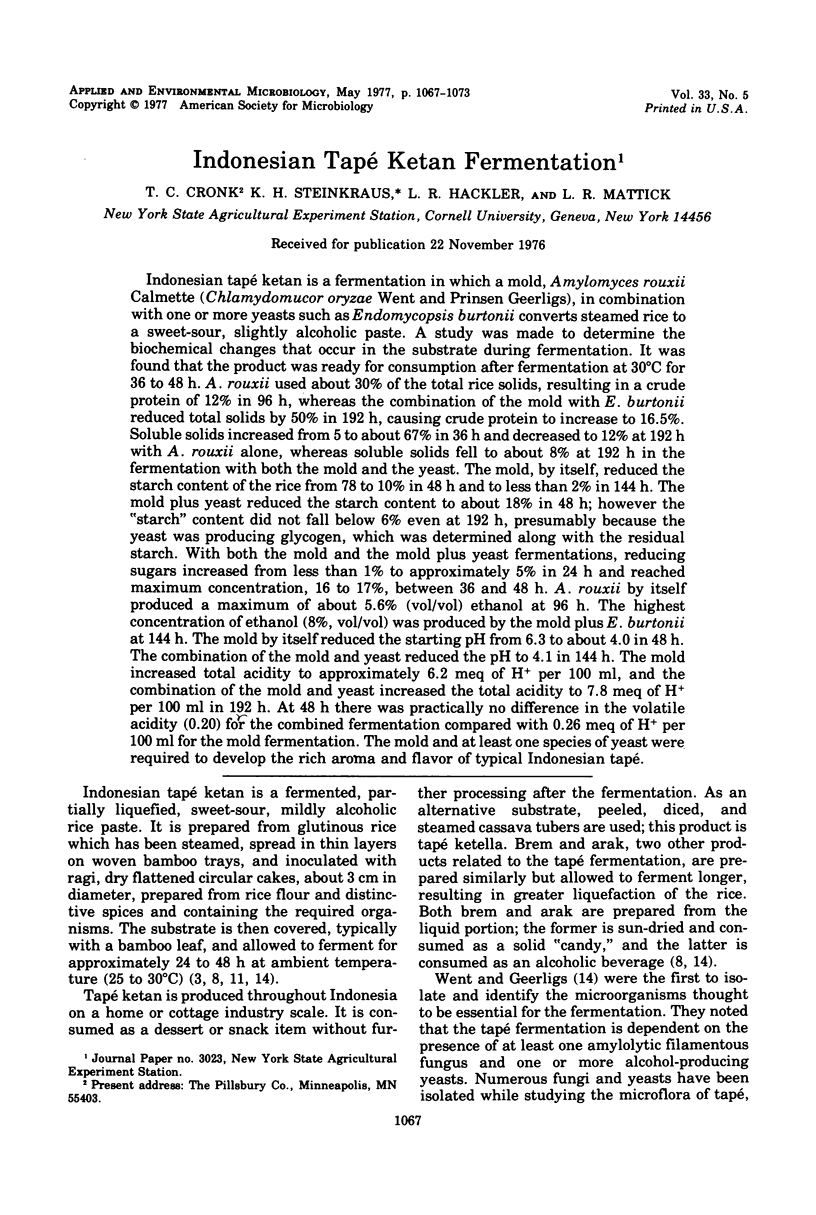
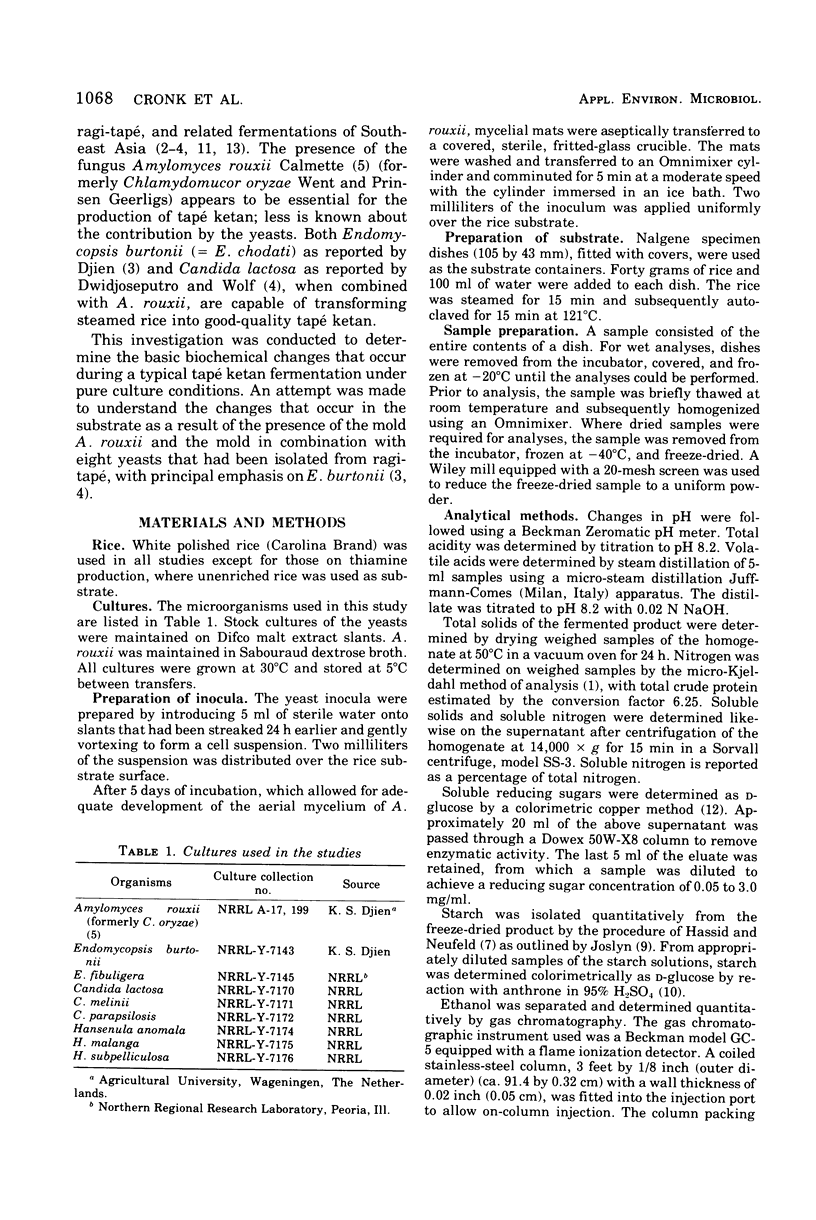
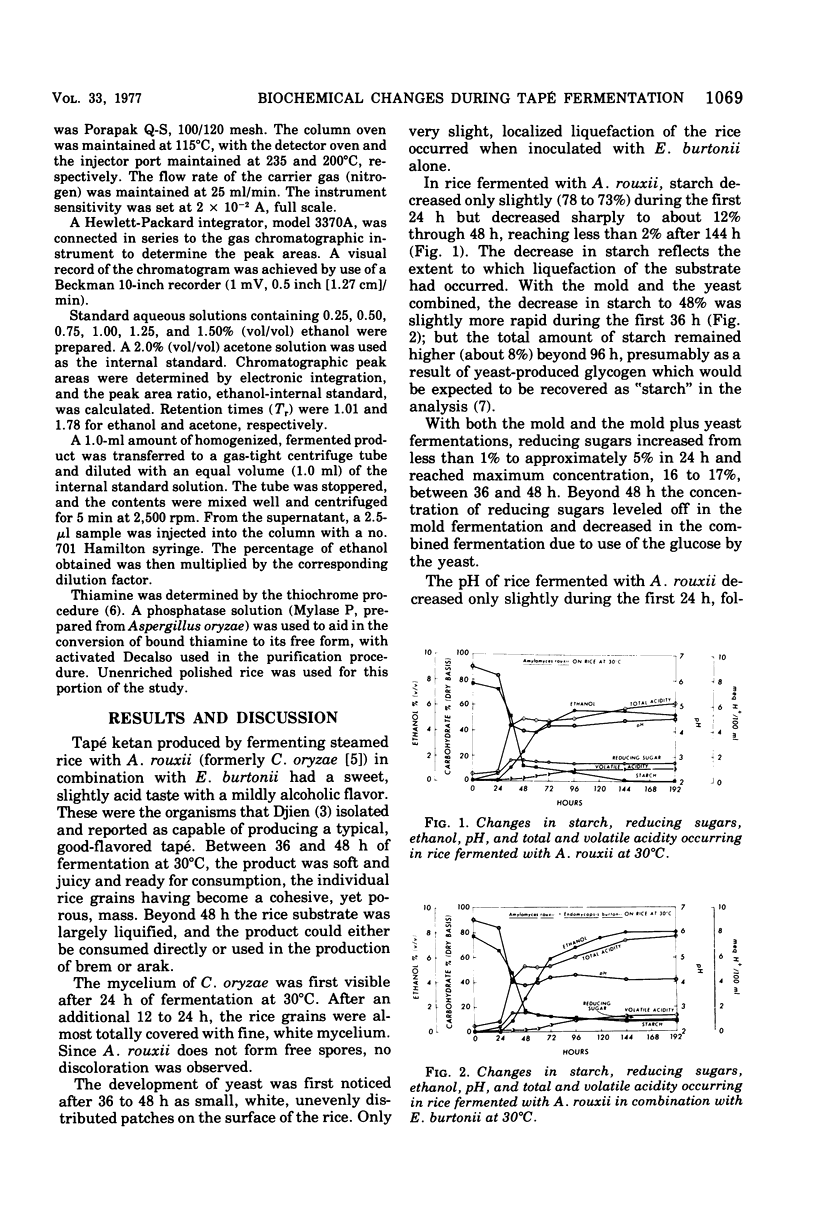
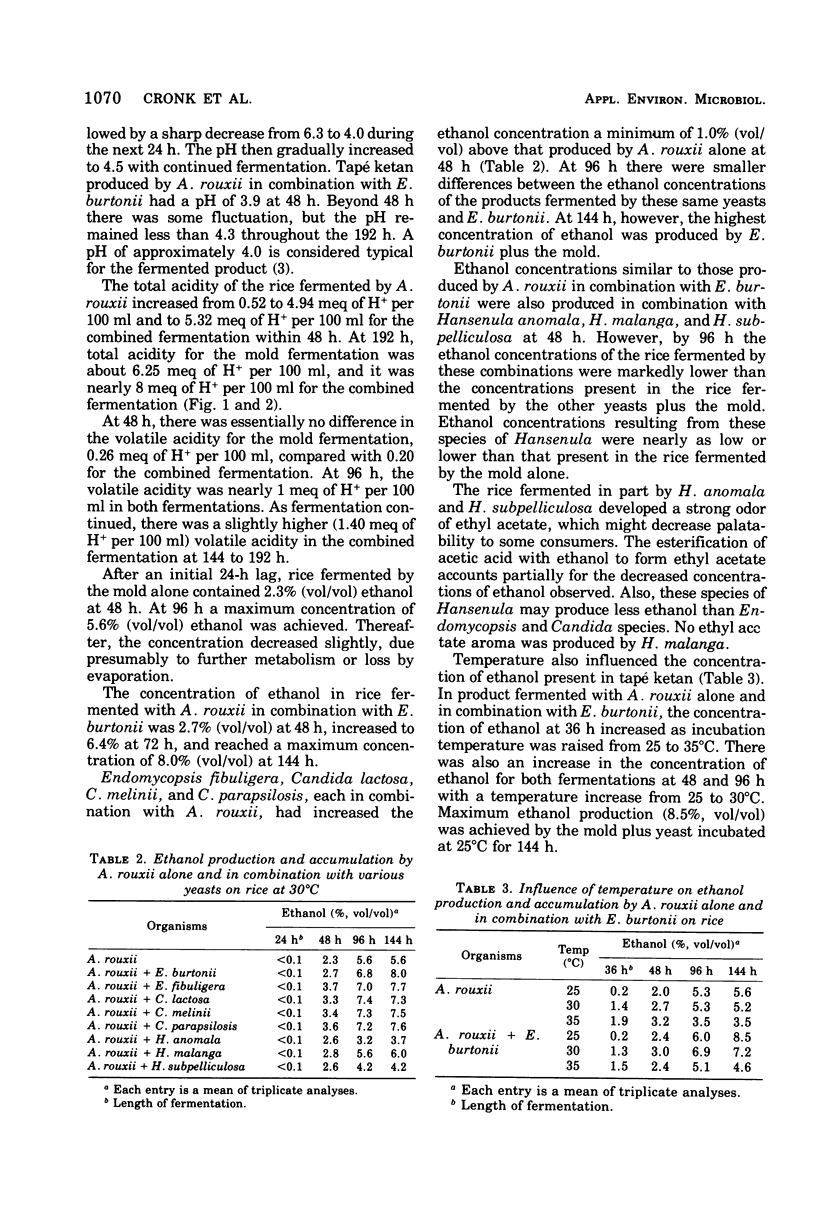
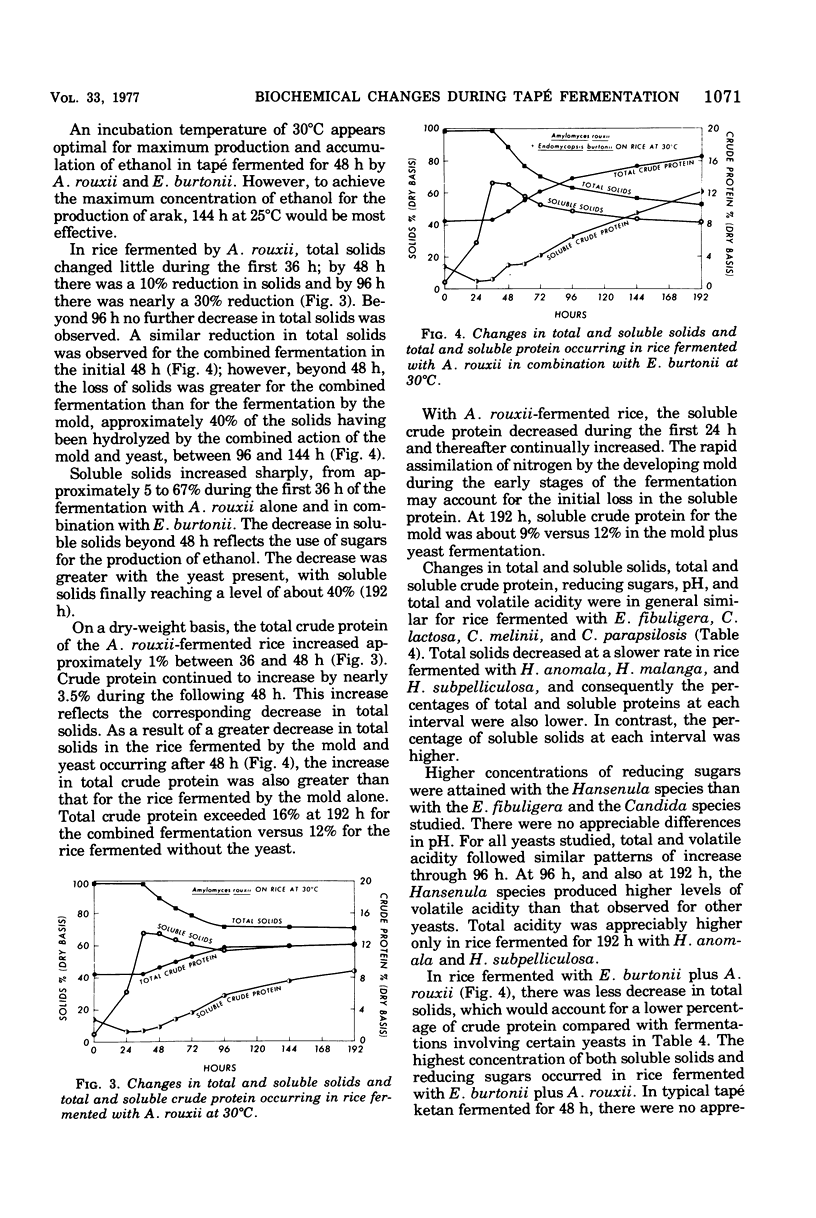
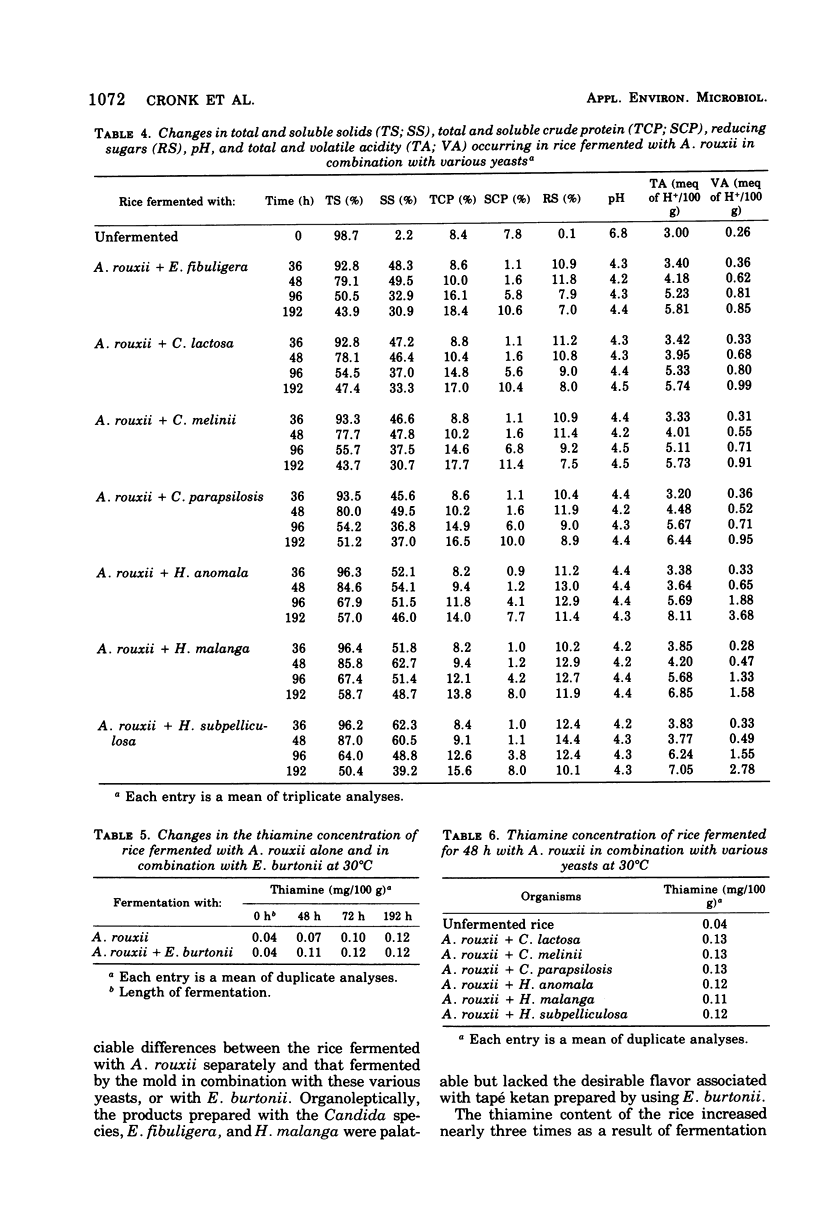
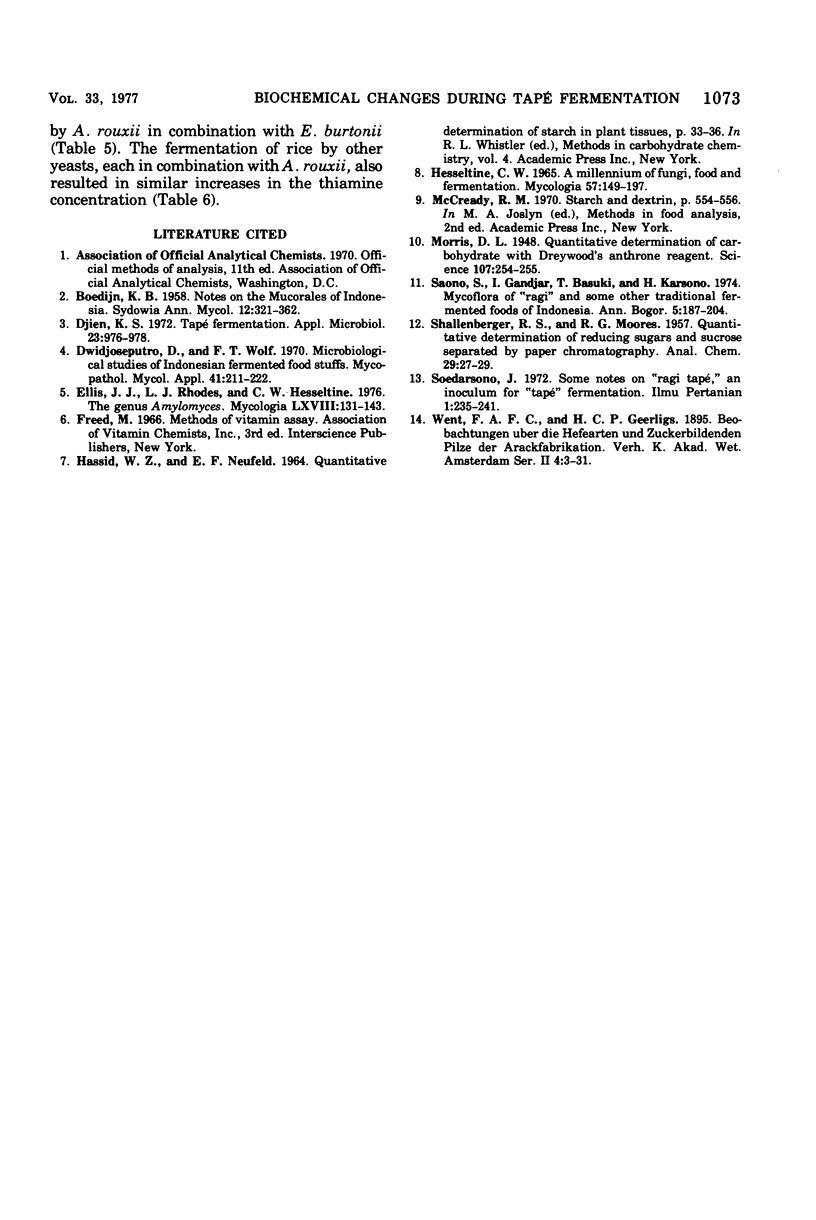
Selected References
These references are in PubMed. This may not be the complete list of references from this article.
- Djien K. S. Tapé fermentation. Appl Microbiol. 1972 May;23(5):976–978. doi: 10.1128/am.23.5.976-978.1972. [DOI] [PMC free article] [PubMed] [Google Scholar]
- Dwidjoseputro D., Wolf F. T. Microbiological studies of Indonesian fermented foodstuffs. Mycopathol Mycol Appl. 1970 Dec 4;41(3):211–222. doi: 10.1007/BF02051099. [DOI] [PubMed] [Google Scholar]
- HESSELTINE C. W. A MILLENNIUM OF FUNGI, FOOD, AND FERMENTATION. Mycologia. 1965 Mar-Apr;57:149–197. [PubMed] [Google Scholar]
- Morris D. L. Quantitative Determination of Carbohydrates With Dreywood's Anthrone Reagent. Science. 1948 Mar 5;107(2775):254–255. doi: 10.1126/science.107.2775.254. [DOI] [PubMed] [Google Scholar]


